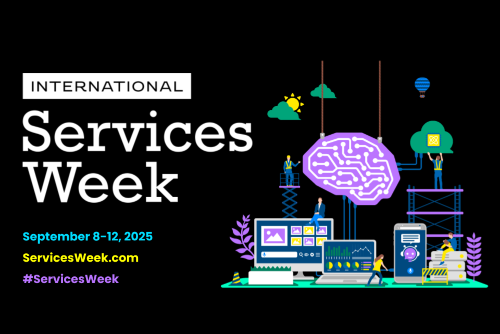9 ways services leaders can boost utilization

When a 1-2% improvement in resource utilization is the difference between hitting or missing your KPIs, effective resource management is key. Working with industry experts and top services organizations, we've learned a lot about what it takes to optimize utilization. If you’re a professional services leader, read on for best practices to help you in these efforts.
1. Establish utilization targets for every resource
Today’s economy offers many opportunities to expand your company’s portfolio through new revenue streams. It also comes with challenges, particularly for embedded services organizations that depend on external and internal resources for service delivery. Utilization targets for outside resources are often not established or applied because they don’t report to your own consulting group.
Establish a utilization target for every resource, even those outside your organization. It does not have to be a billable utilization target; it can also be a productive utilization target where any realistic target percentage you assign will help deliver more predictive, accurate utilization data.
2. Account for all partner activity
Working with external partners poses major challenges for tracking time and utilization. Spreadsheets are too slow and clunky and disconnected professional services automation (PSA) systems often introduce integration issues.
The best solution is to have partners manage their time via a portal or community (that extends your existing PSA solution) where they can input, share, and document all project activities. You will then gain the visibility to assign utilization targets to those resources as well. For example, if the partner isn’t dedicated to a specific project for an extended duration, it makes sense to assign them a utilization target that will roll up to your overall capacity. Not only will this provide a better view into what you can deliver via partners, but it will also ensure you’re not under- or over-allocating any resources, internal or external.
3. Track demand against capacity
Once you’re staying on top of targets and time, it’s time to track the utilization lifecycle so you can identify gaps in supply and demand before they become bigger problems.
First, make sure to establish the right buckets to allocate the time for all of your resources. No matter what service model you’re delivering—time and materials (T&M), fixed-fee, everything-as-a-service (XaaS), managed services—it needs to be established at the opportunity level and tracked through to delivery. Second, make sure you’ve properly assigned targets to outside resources to establish true capacity values.
The lifecycle should look like this: The opportunity is closed/won, moved to backlog, assigned to resources, charged, billed, and tracked using the appropriate buckets. If accounted for properly, this lifecycle data creates your “demand vs. capacity” data to ensure you can always deliver what you’re actually selling.
4. Make every hour count
To successfully track the hours it takes to deliver a project, you must ensure every hour is tracked—whether billable or not. Too many organizations today only track consulting time sold against a project, ignoring time not scoped for resources outside of professional services (e.g. development). The typical reasoning? “We didn’t build the outside resources’ level of effort (LOE) into the project because it’s just a cost center.” But making this mistake means you’ll never identify true project margin and never know if you’re efficiently utilizing the resources outside of consulting. Instead, services leaders should establish productive utilization targets for these resources with a realistic percentage figure tied to specific projects.
5. Improve real-time realized rates
High utilization rates are great, but if your realized rate per hour (RRPH) is low, your margins will be low, and your employees will be overworked. To avoid this, knowing how to calculate your RRPH is important.
To calculate your RRPH, take the services revenue for a period and divide it by the number of productive utilization hours in that period (billable hours plus write-off hours). Next, compare your RRPH against the average contracted rate per hour and/or what you typically sell at to determine the difference.
For example, if your average contract hour is $200 and your RRPH is $125, you may not be selling the correct scope, you may not be delivering efficiently, or you may have too many write-offs. Your goal is to keep the delta as small as possible. In this case, that means closing the gap between the $200 contracted rate and the $125 realized rate.
6. Stay on top of project burndown
Key to utilization tracking is visibility into project burndown, which indicates whether the project is trending correctly or at risk of running over budget. To track this, your project managers must have clear visibility into all project hours budgeted, charged, planned, and unplanned. To be accurate, project burndown must include any and all assigned resources that further the scope of a project, billable or not.
This can all be streamlined with the right PSA solution, with some able to predict the results of a project based on assignments and actuals. If you can add analytics to the mix, you can also predict project results based solely on hours that have not been scheduled.
7. Keeping your team engaged
Services leaders are most likely familiar with “unfair resource allocation”? In a services business, this refers to a consultant feeling overlooked or forced to work on projects they aren’t prepared for, interested in, or skilled for. If an organization doesn’t have visibility into skills, interests, and aspirations, they are most likely dealing with unfair allocation sentiments. The dissatisfaction and burnout that unfair allocation causes have a direct impact on talent retention, utilizitation figures, and, ultimately, the bottom line.
Now is the time to take a serious look at current resourcing strategy and how it impacts employee satisfaction and making sure it keeps them on board. but also the ability to staff projects in a way that keeps them wanting to work.
8. Build the right infrastructure
Services leaders serious about improving utilization and the overall business must empower their teams with a PSA solution that automates key processes and offers full visibility into important metrics.
When evaluating a new PSA system, one of the most important steps you can take is making sure it easily shares data with your CRM. Unifying data related to your customers, projects, resources, and financials on one platform not only makes it easier to calculate and improve utilization but also helps accounts for project details, including calendars, target rates, supply, demand, forecasted revenue, protecting margins, and more. SPI Research indicates that top firms using an integrated PSA and CRM solution achieve utilization rates at 75% and up versus their counterparts at 69%.
Also important: Your PSA solution should integrate with widely used time-tracking tools. Developers are a great example of non-billable resources that often contribute to projects, but many are already tracking their time in a separate system like Jira. A bidirectional integration like the one between Certinia PS Cloud and Jira saves employees from logging time in multiple places and helps surface the true effort involved in projects.
9. Invest in real-time data analytics and predictability
Instead of manually cobbling together best guesses based on past events, take advantage of real-time analytics to see what’s happening now and in the future. Always know what is going in and out of professional services (e.g., resources, projects, partners), how much capacity is left by skill, and how to manage it to deliver on customer expectations.
Furthermore, cutting-edge analytics can tap into scenario-based formulas and delivery curves specific to your organization to accurately predict your business’s utilization, backlog, and capacity over the next 12 months. The right PSA solution will offer these insights at the broader departmental and business levels and at various resource levels, such as practice, geography, or role.
Ready for the challenge?
All the interest around utilization is understandable, and without an easy, accurate way to measure and target utilization, the metric won’t do your company much good. For utilization to work its magic, you need to be able to account for every variable at every level of the organization. And if you’re using dated processes and technology, that can be extremely difficult.
Recent Articles
Maximize your Salesforce investment with Certinia






